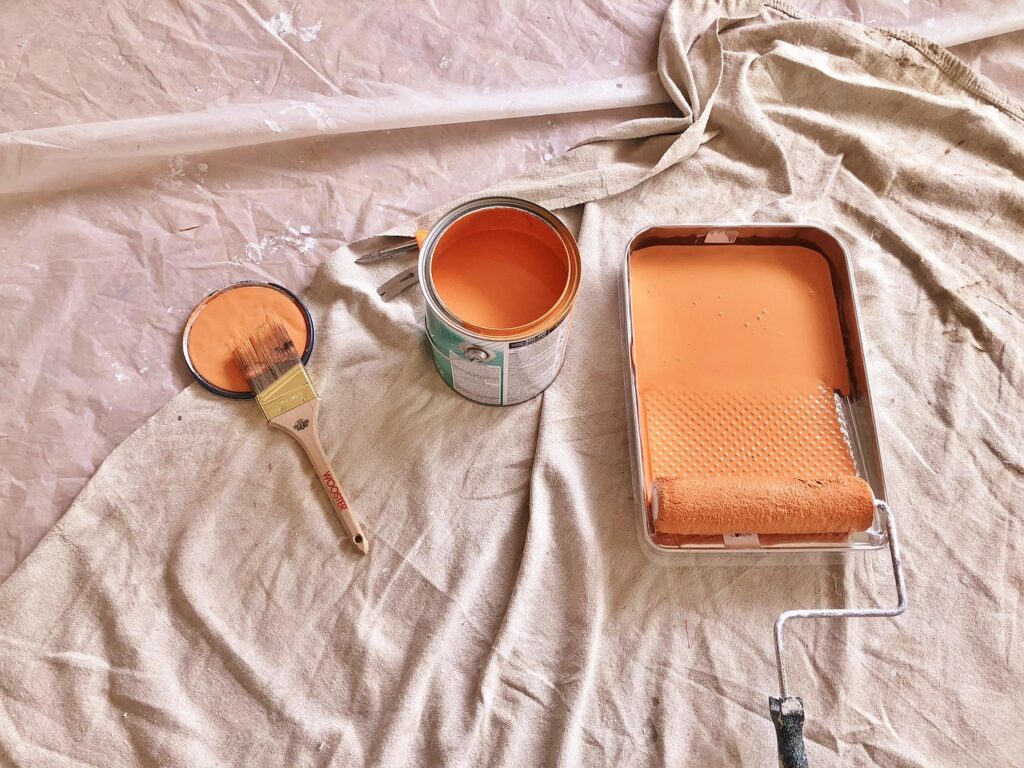When it comes to home improvement, few DIY projects are as satisfying—and as impactful—as painting. But before you grab a brush and start transforming your space, there’s one decision that can make or break your project: choosing the right color.
Picking paint colors may seem simple, but many homeowners find themselves overwhelmed by endless swatches and second-guessing their decisions. Whether you’re painting a single accent wall or giving your entire home a makeover, this guide will walk you through how to confidently choose colors that work with your space, your style, and your goals.
Why Color Matters
Color has the power to change how a room feels. The right shade can make a small space feel larger, a dark room feel brighter, or a bland wall feel full of personality. Understanding the mood you want to create is the first step toward picking the right palette.
Step 1: Understand the Mood of the Room
Ask yourself: What do I want to feel when I walk into this space?
Here are some general color-mood associations to consider:
-
Blues and Greens: Calm, peaceful, and refreshing. Great for bedrooms, bathrooms, or offices.
-
Neutrals (Whites, Beiges, Grays): Clean, timeless, and versatile. Ideal for living rooms, hallways, or any space you want to personalize with furniture and décor.
-
Warm Tones (Yellows, Reds, Oranges): Energetic, welcoming, and vibrant. Perfect for kitchens, dining areas, or playrooms.
-
Dark Shades (Navy, Charcoal, Deep Forest): Bold and dramatic. These can work well in larger spaces, accent walls, or cozy reading nooks.
Tip: Don’t be afraid of color. Even bold tones can look sophisticated when used intentionally.
Step 2: Consider Natural Light
Lighting has a major effect on how paint looks in real life. A color that looks perfect in the store or on a paint chip may appear completely different in your home.
Here’s a quick breakdown:
-
North-facing rooms tend to get cooler, indirect light. Warm colors help balance that out.
-
South-facing rooms get the most natural light and can handle cooler or darker shades without feeling gloomy.
-
East-facing rooms get soft, warm morning light. These spaces benefit from warm neutrals and pastels.
-
West-facing rooms get brighter light later in the day, which can bring out warm tones in the afternoon and make cool tones look washed out.
Always test your paint samples on multiple walls and check them at different times of the day.
Step 3: Coordinate with Fixed Features
Before you fall in love with a paint color, take a good look at what already exists in your space. Consider:
-
Flooring (wood, tile, carpet)
-
Countertops and cabinets
-
Backsplashes
-
Trim and doors
-
Large furniture pieces
You’ll want your paint colors to complement—not clash—with these fixed elements. If your kitchen has warm wood cabinets, cool gray walls may look off. Instead, try a greige (a mix of gray and beige) or soft cream.
Step 4: Choose a Color Family, Then Narrow It Down
Once you’ve decided on a mood and considered lighting and room elements, pick a color family. For example, if you want a relaxing bedroom, you might choose blues. From there, pick 3 to 5 shades within that family to sample.
Paint brands often group colors into palettes that work well together. Use these guides to help you narrow down complementary wall and trim colors—or even accent wall ideas.
Tip: Don’t rely on paint chips alone. Buy small sample sizes and test large swatches on your walls.
Step 5: Understand Undertones
This is where many DIYers get tripped up. Two grays can look completely different depending on whether they have warm (yellow/red) or cool (blue/green) undertones. The same goes for whites, beiges, and even colors like green and blue.
How to identify undertones:
-
Compare the paint swatch to a pure white sheet of paper.
-
Compare one color against several others in the same family.
-
Ask for help at the paint counter—they often know which colors have cool or warm undertones.
Your wall color’s undertone should coordinate with the undertones in your flooring, cabinets, and other key elements.
Step 6: Think About the Flow Between Rooms
If you’re painting more than one room, it’s important to consider how colors transition from one space to another. Your home doesn’t need to be one color throughout, but there should be a sense of harmony.
Choose a main color for common areas like the living room, kitchen, or hallway. Then pick complementary tones for adjoining rooms, even if they vary slightly in shade or saturation.
This creates a natural, cohesive flow—especially in open-concept homes.
Step 7: Decide on the Finish
Once you’ve chosen your color, pick the right finish. Each has its pros and cons depending on where it’s used.
-
Flat/Matte: Great for ceilings or low-traffic walls. Hides imperfections but isn’t very washable.
-
Eggshell: A soft, low-sheen finish ideal for most walls. Slightly more durable than flat.
-
Satin: A bit glossier and more washable. Works well in living rooms and hallways.
-
Semi-Gloss: Durable and easy to clean. Best for trim, kitchens, and bathrooms.
-
Gloss/High Gloss: Very shiny and durable—good for doors or cabinets, but can highlight imperfections.
Step 8: Sample, Sample, Sample
No matter how confident you are, always test your top 2–3 paint choices in real lighting. Paint a 2′ x 2′ square on several walls and observe it at different times of day. You might be surprised how much the look changes.
Live with it for a couple of days before making your final decision.
Final Thoughts
Picking paint colors doesn’t have to be stressful. With a bit of planning and a few smart tips, you can find shades that reflect your personal style and elevate your space. Think about how you want your room to feel, consider the natural light and existing elements, and don’t skip the sampling step.
Whether you’re going bold with an accent wall or keeping it neutral for resale value, the right color choice is the foundation for a successful DIY paint project.
With patience and a good eye, you’ll turn blank walls into beautiful backdrops that make your house feel more like home.


